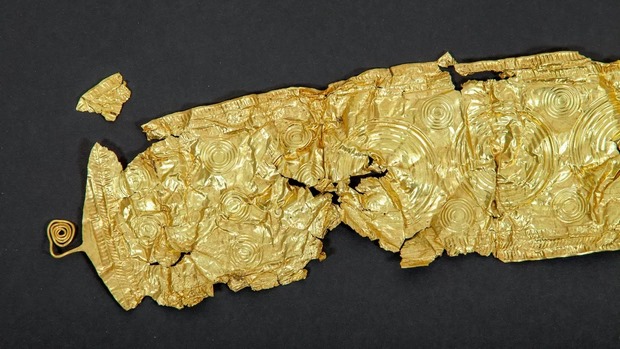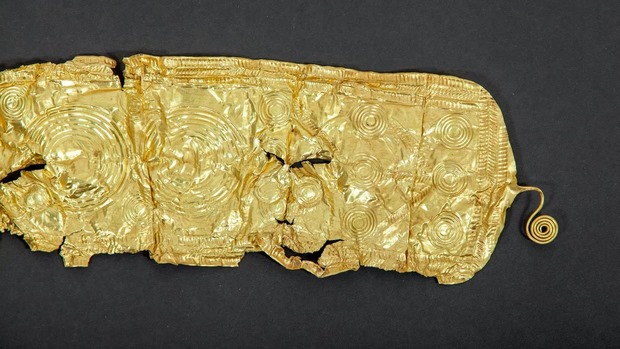A farmer in the Czech Republic witnessed a miracle with his own eyes last month when he discovered a thin, broken gold plate in a field! Later, this thin plate turned out to be a 2500-year-old gold belt. This golden belt belongs to the Bronze Age and is now being studied by archaeologists.
A lucky farmer found a 2,500-year-old gold ingot
A farmer in the Czech Republic discovered a 2,500-year-old gold ingot in his field last month. This decorative piece is covered with earth. However, it is well preserved.
It appears that the farmer who discovered the artifact took a picture of it and then sent it to archaeologists at the Silesian Museum near Opava. The farmer now wants to remain anonymous in the media.
Jerry Zochilka, head of the Archeology Department of the Silesian Museum, told International Radio Prague that the 51cm piece was most likely the front of a leather belt. This piece is made of gold and has silver, copper and iron pieces.

The 2,500-year-old gold ribbon is decorated with raised, concentric circles and rosette clasps. According to Goshelka, it is possible that several small parts of the belt are missing. Other than this minor flaw, the bracelet is in excellent condition.
Theresa Alex Kellnar is currently studying and analyzing this belt at the Brunntal Museum. Based on the style of decoration, experts believe that this gold band dates back to the late Middle Bronze Age (around the 14th century BC).
The Bronze Age is known for its abundance of bronze artifacts. During this period, the trade of raw materials such as gold was also taking place and it became one of the exclusive assets of the upper class of the society.

Archaeologists had previously found other gold objects in burials in Central Europe dating back to the Bronze Age. Gold objects were also found in some warehouses, which indicates the link between the gifts of the upper classes of society and their supernatural beliefs.
Little is known about the 2,500-year-old gold bullion. It is not yet clear whether this belt belonged to a cemetery or a storeroom. According to Kilnar, the belt belonged to someone of the upper class. Because valuables like this belt were rarely produced at that time.
Australian National University archaeologist Catherine Freeman, who specializes in the study of Bronze Age metalwork in Europe, admitted that the owner of this gold ingot was a person of high social or spiritual status.

According to Freeman, metalworking, including gilding, flourished greatly during the Bronze Age. Gold bodies with circular features are often associated with Bronze Age cosmic systems focused on solar cycles, Freeman said.
Despite the lack of scrutiny by experts, the great significance of this golden belt is clear. It’s rare to find jewelry of this type untouched and complete with such elegance, says Freeman; Because gold leaf is torn like paper. Certain gold is rarely found during digging. This innovation is unique not only in our region but throughout the Czech Republic.
227227










